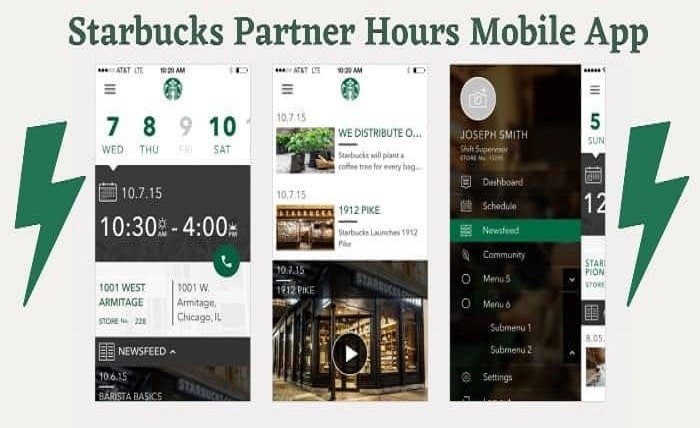Partner Hub Hours: Everything You Need to Know

Introduction
Partner Hub Hours are a critical aspect of managing partnerships in today’s fast-paced business environment. Whether you’re working with external collaborators or internal teams, understanding and optimizing Partner Hub Hours can significantly impact your productivity and success. This comprehensive guide will delve into the concept of Partner Hub Hours, explaining what they are, why they are important, and how they can be optimized to meet your business goals. If you’re involved in any kind of partnership or collaboration, mastering Partner Hub Hours is essential.
What Are Partner Hub Hours?
Partner Hub Hours refer to the designated hours during which a business or organization collaborates with its partners through a centralized platform or hub. These hours are typically set to ensure that all parties involved in a partnership can communicate, collaborate, and work together effectively. Understanding Partner Hub Hours is crucial because it helps in planning, scheduling, and managing tasks that require input or coordination with partners. By defining Partner Hub Hours, businesses can streamline their operations and ensure that all partners are on the same page.
Why Partner Hub Hours Matter
Partner Hub Hours play a significant role in the efficiency and effectiveness of business collaborations. When Partner Hub Hours are clearly defined and adhered to, it allows for seamless communication and collaboration between partners. This is especially important in scenarios where partners are located in different time zones or have varying schedules. Partner Hub Hours ensure that there is a designated time for meetings, updates, and collaborative tasks, which helps in avoiding misunderstandings and delays. Businesses that prioritize Partner Hub Hours are more likely to achieve their objectives in a timely and organized manner.
How to Set Up Partner Hub Hours
Setting up Partner Hub Hours requires careful planning and consideration of the needs and schedules of all partners involved. The first step is to determine the optimal time slots that accommodate the working hours of all parties. This may involve adjusting for different time zones or taking into account the peak productivity hours of each partner. Once the time slots are determined, it’s important to communicate these Partner Hub Hours clearly to all partners. Using tools like shared calendars, reminders, and notifications can help in ensuring that everyone is aware of and adheres to the established Partner Hub Hours.
Best Practices for Managing Partner Hub Hours
Managing Partner Hub Hours effectively is key to maximizing the benefits of your partnerships. One of the best practices is to maintain consistency in your Partner Hub Hours. This means sticking to the designated hours as much as possible to build a routine that all partners can rely on. Another important practice is to ensure that all communications and tasks that require collaboration are scheduled within the Partner Hub Hours. This helps in avoiding any last-minute rushes or missed deadlines. Additionally, regularly reviewing and adjusting your Partner Hub Hours based on feedback and changing circumstances can help in keeping them relevant and effective.
Tools to Optimize Partner Hub Hours
There are several tools available that can help businesses optimize their Partner Hub Hours. Collaboration platforms like Slack, Microsoft Teams, and Asana offer features that allow you to set and manage Partner Hub Hours effectively. These tools often include shared calendars, task management systems, and communication channels that can be customized to fit your Partner Hub Hours. Additionally, time zone converters and scheduling apps like World Time Buddy and Doodle can be invaluable when coordinating with partners in different regions. Utilizing these tools can make it easier to keep track of Partner Hub Hours and ensure that all partners are aligned.
Challenges in Coordinating Partner Hub Hours
Coordinating Partner Hub Hours can be challenging, especially when dealing with multiple partners, varying time zones, and different work cultures. One common challenge is finding a time that works for all partners, particularly in global collaborations where partners may be spread across continents. Another challenge is maintaining flexibility while adhering to the set Partner Hub Hours. Emergencies and unexpected changes can disrupt the schedule, making it difficult to stick to the plan. Overcoming these challenges requires open communication, a willingness to compromise, and the ability to adapt to changing circumstances.
The Impact of Partner Hub Hours on Productivity
Partner Hub Hours have a direct impact on the productivity of partnerships and collaborations. When Partner Hub Hours are well-planned and consistently followed, they create a structured environment that facilitates efficient communication and task management. This structure helps in minimizing downtime and ensuring that all partners are working towards the same goals simultaneously. On the other hand, poorly managed Partner Hub Hours can lead to confusion, miscommunication, and delays, which can negatively affect productivity. By optimizing Partner Hub Hours, businesses can enhance their overall efficiency and achieve better outcomes in their partnerships.
Case Studies: Successful Implementation of Partner Hub Hours
To understand the benefits of Partner Hub Hours, it’s helpful to look at real-world examples of businesses that have successfully implemented them. One case study involves a multinational company that set up Partner Hub Hours to coordinate with its regional offices across different time zones. By establishing a fixed schedule for meetings and collaborative tasks, the company was able to improve communication, reduce project timelines, and increase overall efficiency. Another example is a startup that used Partner Hub Hours to manage its relationships with external vendors and suppliers. The startup found that clear communication and consistent Partner Hub Hours led to better service delivery and stronger partnerships.
Adjusting Partner Hub Hours for Different Time Zones
When partners are located in different time zones, adjusting Partner Hub Hours becomes crucial. The goal is to find overlapping hours that allow all parties to participate without compromising their work-life balance. This may involve shifting the Partner Hub Hours slightly for some partners or alternating the schedule on different days. Tools like time zone converters can help in identifying the best possible hours for collaboration. It’s also important to remain flexible and open to adjustments as needed, especially when dealing with partners who have significantly different time zones.
How to Communicate Changes in Partner Hub Hours
There will be times when changes to Partner Hub Hours are necessary, whether due to a new partnership, changes in business operations, or unforeseen circumstances. Communicating these changes effectively is essential to maintaining a smooth workflow. The first step is to inform all partners as soon as the changes are decided, providing them with ample notice to adjust their schedules. Use clear and concise language to explain the reasons for the change and how it will benefit the partnership. It’s also helpful to provide updated schedules and use tools like shared calendars to ensure that everyone is on the same page.
The Future of Partner Hub Hours
As businesses continue to globalize and embrace remote work, the concept of Partner Hub Hours will likely evolve. Future trends may include more dynamic and flexible Partner Hub Hours that cater to the increasingly diverse and distributed nature of modern workforces. Additionally, advancements in technology, such as AI and automation, could further optimize the way Partner Hub Hours are managed. Businesses that stay ahead of these trends and continuously adapt their Partner Hub Hours will be better positioned to thrive in an ever-changing business landscape.
Conclusion
Partner Hub Hours are a vital component of effective collaboration and partnership management. By understanding what Partner Hub Hours are, why they matter, and how to optimize them, businesses can enhance their productivity and strengthen their partnerships. Whether you’re dealing with local partners or coordinating across time zones, establishing clear and consistent Partner Hub Hours is essential for success. As the business world continues to evolve, staying informed and adaptable with your Partner Hub Hours will be key to maintaining strong, efficient, and successful collaborations.
FAQs
1. What are Partner Hub Hours?
Partner Hub Hours refer to the designated hours during which a business collaborates with its partners through a centralized platform or hub to ensure effective communication and coordination.
2. Why are Partner Hub Hours important?
Partner Hub Hours are important because they facilitate seamless communication and collaboration between partners, ensuring that tasks and projects are completed efficiently and on time.
3. How do you set up Partner Hub Hours?
Setting up Partner Hub Hours involves determining optimal time slots that accommodate all partners’ schedules, communicating these hours clearly, and using tools like shared calendars to manage them.
4. What challenges can arise with Partner Hub Hours?
Challenges with Partner Hub Hours can include coordinating across different time zones, maintaining flexibility, and dealing with unexpected changes that disrupt the schedule.
5. How can Partner Hub Hours be optimized for different time zones?
To optimize Partner Hub Hours for different time zones, find overlapping hours that work for all partners, use time zone converters, and remain flexible to accommodate everyone’s needs.





